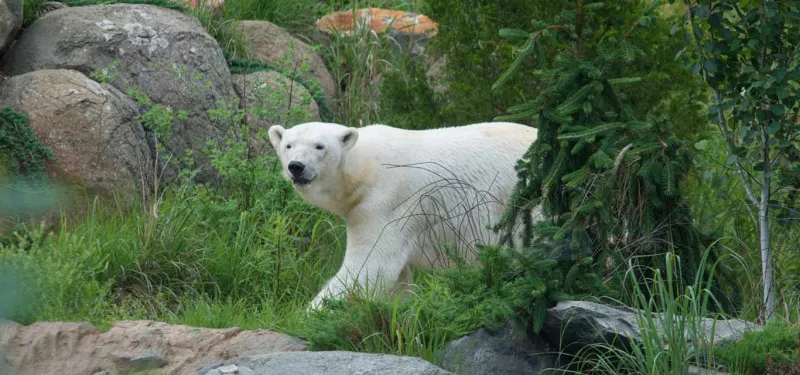Written by Emily Lynch, Ph.D., Associate Curator of Research, North Carolina Zoo
It’s nice to stay at home, but as you may realize during this quarantine, a change of scene could really improve your mood. Just like humans, other animals can benefit from moving between different areas.
This brings me to polar bears. There are two important things you should know about polar bears:
First, polar bears are solitary animals --- adults will travel, feed, and generally live alone, although females may be accompanied by young cubs. Every year, though, there is a breeding season (typically March to June), where males and females will congregate, pair off, and spend a week or so together. But, for most of the year, adult polar bears are by themselves.
Second, polar bears walk --- a lot! They can travel up to 19 miles or more, each day. This means they see and experience different areas every day.
Here at the North Carolina Zoo, we have two polar bears, a male, Nikita, and a female, Anana. To mimic their natural social dynamics, the two bears are kept apart for 48 weeks of the year (the other 4 weeks are spent together during the breeding season). To accommodate their typically solitary lifestyle, we have created two naturalistic habitats: Arctic Waters and Tundra. Arctic Waters is just as it sounds: mainly a deep, cold pool, to encourage natural polar bear swimming behavior, along with a rocky landscape, trees, and vines (Picture 1). Tundra, on the other hand, is constructed to resemble Manitoba, Canada, with trees, bushes, grass and dirt, three digging pits, a stream, a rocky den, and a covered cave-like area (Picture 2). Behind the scenes, there are air-conditioned holding areas and aisles that lead to the outside habitats; this enables the bears to “shift” between habitats without ever coming into contact with one another.

Picture 1: Nikita taking in a view from above in the Arctic Waters habitat

Picture 2: Anana exploring the Tundra habitat
To encourage environmental variety, the bears are randomly rotated between these habitats. Each bear spends their day in one of the four following placements: 1) Arctic all day; 2) Tundra all day; 3) Arctic in the morning, Tundra in the afternoon; or 4) Tundra in the morning, Arctic in the afternoon. While we intend to mimic the movement of their wild counterparts, the Zoo is committed to relying on data-driven animal management techniques. How do we know which placement the bears prefer? This is where research comes to the rescue!
To evaluate the effect of the two habitats on polar bear behavior, North Carolina State University student, Kayla Latta, designed a scientific study. For 30-minute sessions, from 8:30 a.m. to 5:00 p.m., Kayla recorded the behaviors and activities of a polar bear. She made sure to note where the bear was and what type of placement the bear was experiencing (e.g., Tundra all day, Arctic all day, Arctic morning, Arctic afternoon, Tundra morning, Tundra afternoon).
Kayla found that, generally, the bears exhibited desirable behaviors, indicative of good welfare, regardless of what areas they had access each day. The random switching between Tundra and Artic Waters on some days probably helps create some variability, but in the end the bears thrive wherever they are hanging out.
I think, in the end, it’s clear the bears enjoy endless paw-sibilities!
